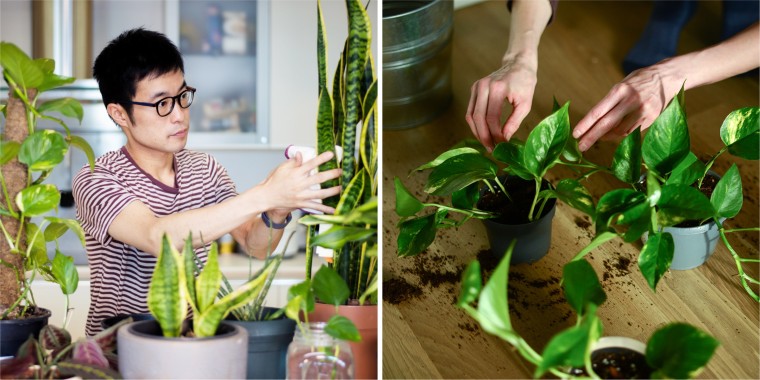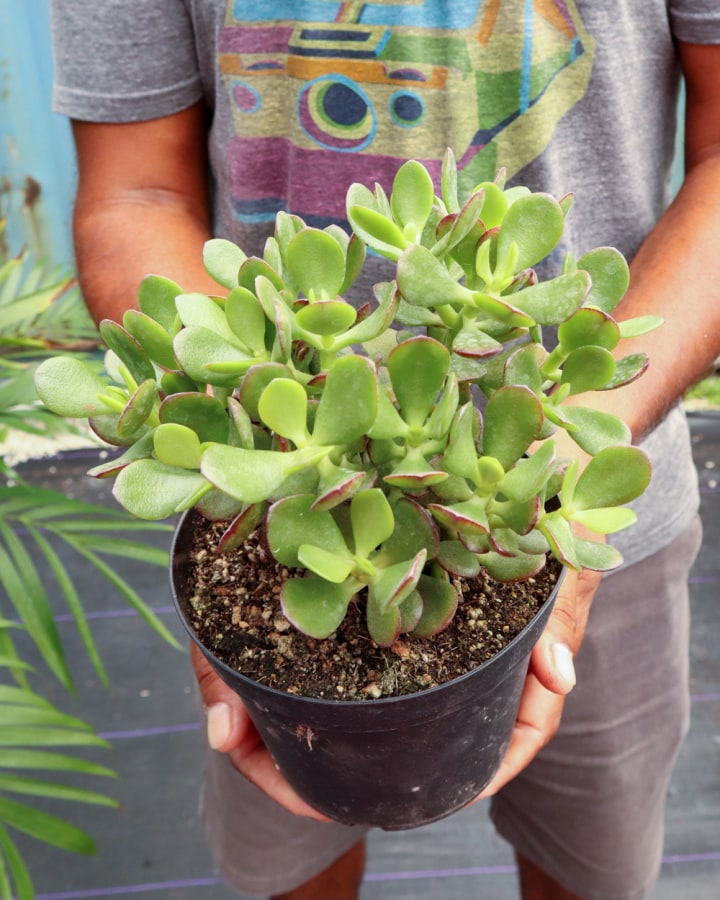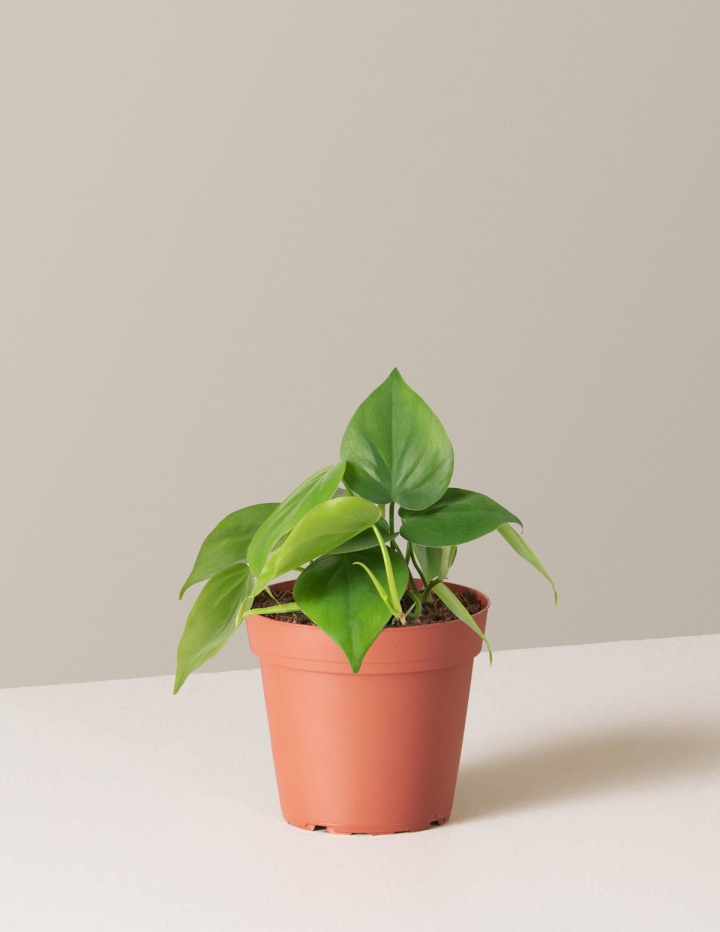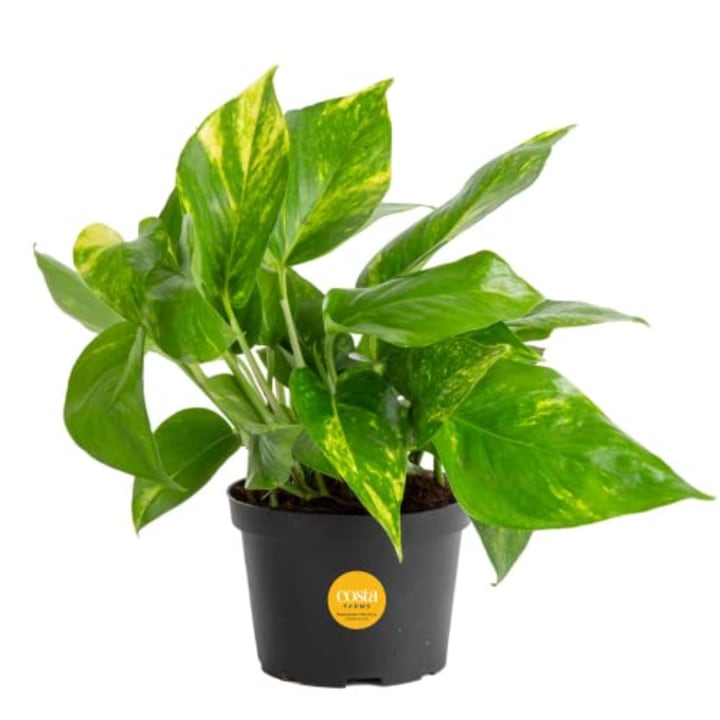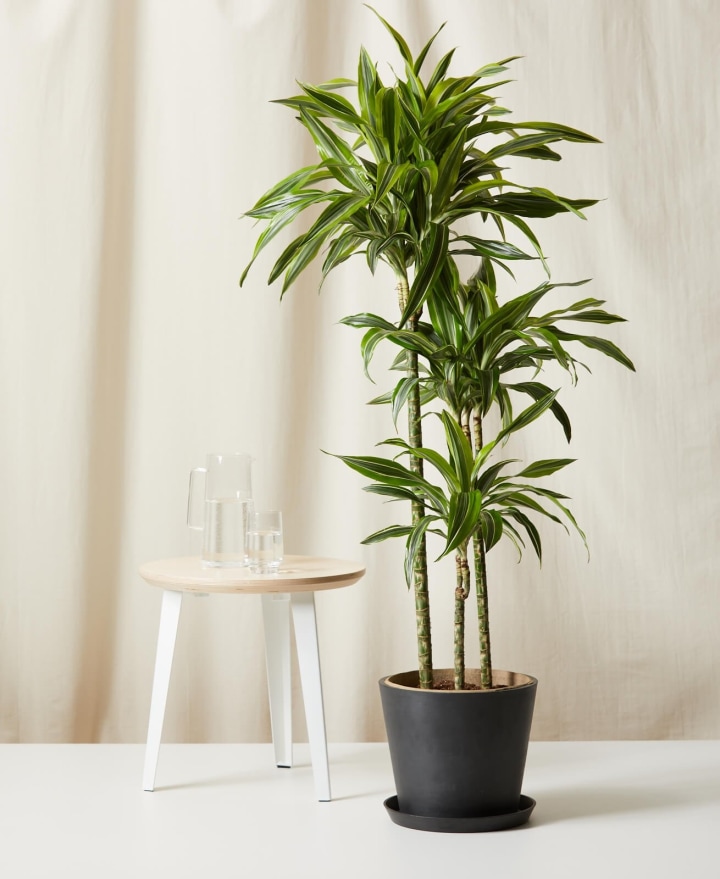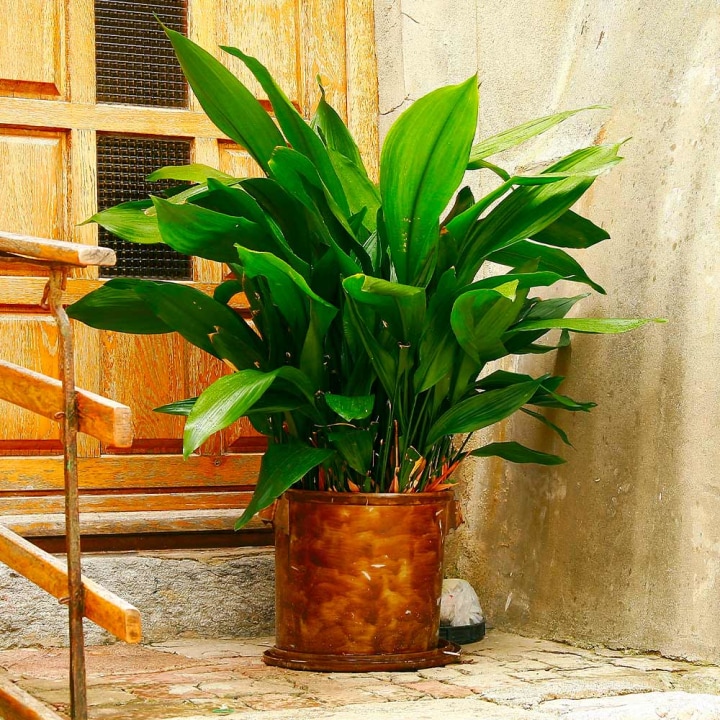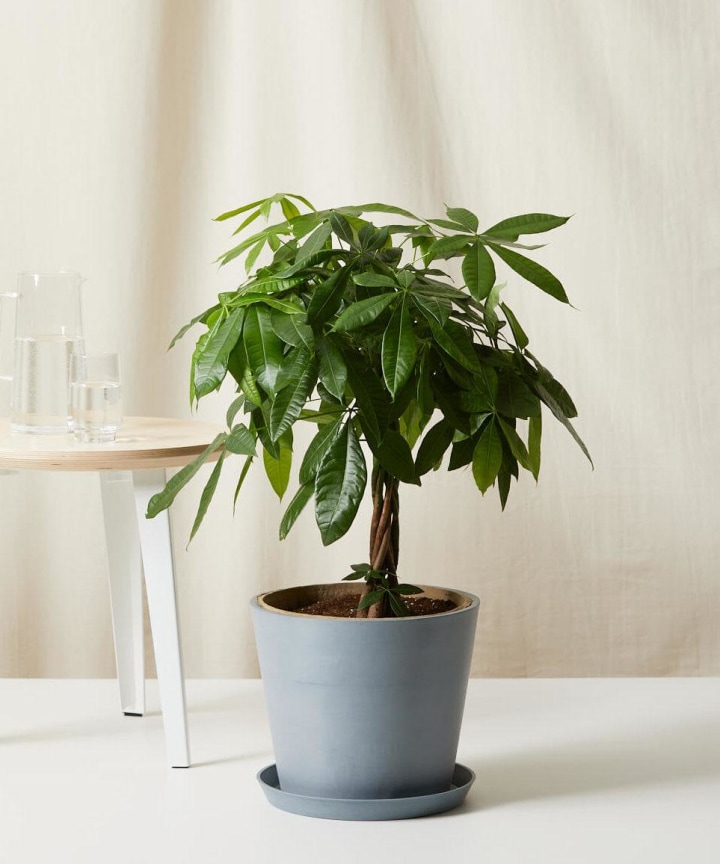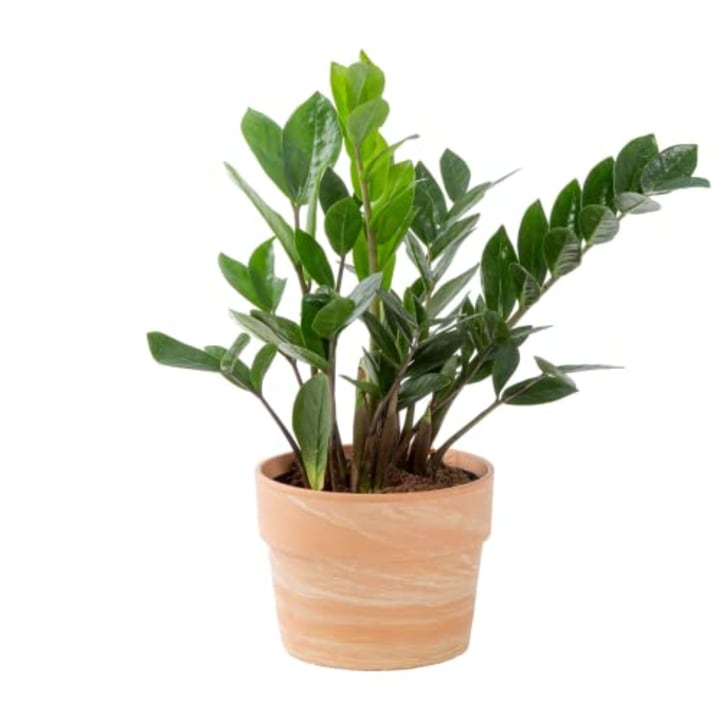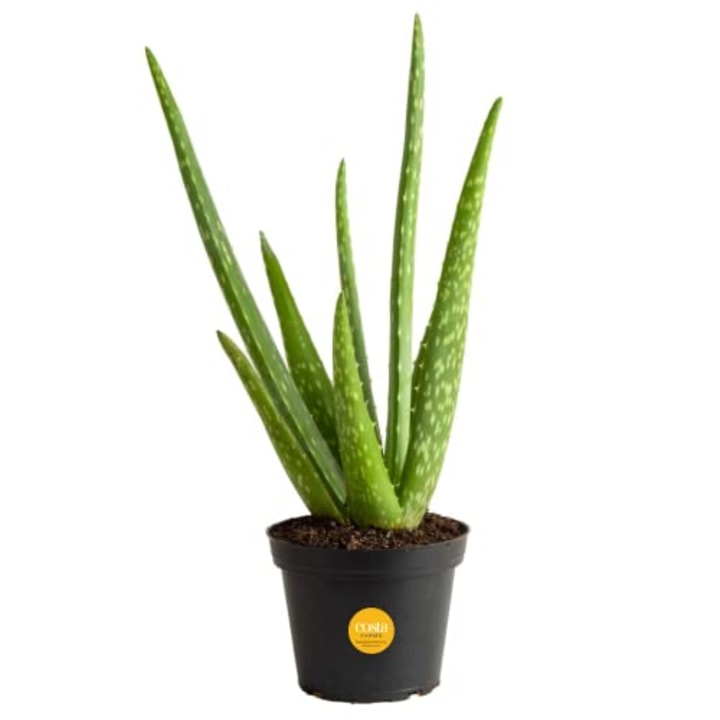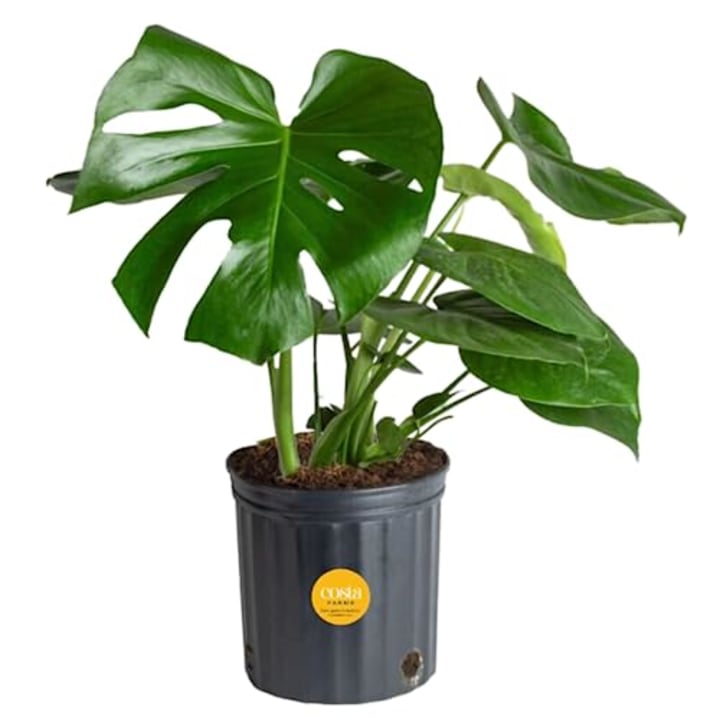If you’re a gardening newbie who gets busy or forgetful, your plant babies suffer the consequences.Eventually, dead leaves around a once-thriving houseplant can make it feel like your green thumb is broken. Starting an at-home garden may seem intimidating, but adding some green to your space is worthwhile. Studies have shown that indoor plants can lower your stress levels, elevate your mood and improve your concentration and productivity.
You don’t need a lot of time, space or even light for your indoor garden, either. In fact, some of the best low maintenance plants actually prefer little sun and infrequent watering. We consulted gardening experts and plant-savvy Select editors to learn about them so you can go green with confidence.
SKIP AHEAD Best low-maintenance indoor plants | How to pick the right indoor plant | How to care for indoor plants
Our top picks
- Best overall: Pothos
- Best succulent: Snake Plant
- Best tall plant: Dracaena Gold Star
How we picked the best low-maintenance plants
To choose the best low-maintenance plants, we kept the following in mind:
- Lighting and watering needs: These are some of the trickiest tasks for beginners to learn. Plants that require strict care may be overwhelming, so experts suggest plants that easily adapt and can go long stretches without water.
- Potential for propagation: Propagation is the process of creating new plants from the parts of others, and it’s a money saver for people who want to grow their collection without overspending. Offsets — which are small plants found at the bottom of a parent plant — are easily separated or pulled apart, making them “a perfect type of propagation for beginners to try,” according to Aaron Steil, a consumer horticulture extension specialist at Iowa State University.
- Size and style: One of the best things about plants is their ability to function as both hobbies and home decor. We considered the mature size and look of each plant, and our experts included options for spaces both large and small.
- Pest issues: “No plant is bug-free,” says Steil — “it’s possible for any houseplant to get insects.” Although our picks are generally less prone to pests, Steil recommends “inspecting new plants carefully before bringing them home and isolating new plants from [others] for a few weeks,” to reduce the chances of spread if something does happen.
Best low-maintenance indoor plants
Ready to start growing? Here are some of the best low-maintenance indoor plants, according to the experts we spoke to, and other recommendations by Select staff.
Snake Plant
Steil recommends the snake plant, which is a succulent —a type of plant with thick, fleshy parts for retaining water—that tolerates medium to bright light. Its slender, pointed leaves resemble miniature swords, and will add a touch of elegance to any space. It can also help improve air quality by filtering toxins like formaldehyde, xylene and toluene. Select updates editor Mili Godio counts it as one of the easiest plants she’s ever had—it can go without water for two to three weeks, or until its leaves start to wrinkle.
Ideal Lighting: Medium to bright | Watering Schedule: 1-2 weeks or when soil is completely dry | Mature Height: Approx. 1-3 feet | Pests: Susceptible to pests
Chinese Money Plant
The coin-shaped leaves of the Chinese money plant start to droop when the plant is thirsty, making it easier for beginners to know how often it needs watering. It does best with bright, but indirect light, and Steil says that it “readily produces offsets that are easy to propagate” and share with friends.
Ideal Lighting: Bright and indirect | Watering Schedule: When leaves begin to droop | Mature Height: Approx. 12 inches | Pests: Susceptible to pests
Jade Plant
The low-maintenance Jade plant doubles as decor, thanks to its glossy, egg-shaped leaves. Because it grows best with indirect, medium to bright light, Steil recommends keeping this one indoors, and watering infrequently since its fleshy leaves store water for long stretches of time. Steil says this is another plant that “propagates easily,” so you can get several plants from just one purchase.
Ideal Lighting: Medium to bright and indirect | Watering Schedule: Every 2-3 weeks | Mature Height: Approx. 1 foot | Pests: Unlikely
Philodendron
The Philodendron, an extremely adaptable and low-maintenance plant, has quick-growing vines, which can be easily pruned and/or propagated in water when they get too long. This plant prefers medium to bright indirect light (though it can tolerate low light too) with watering every one to two weeks. Godio’s philodendron sits behind her during Zoom meetings, and she says it has “thrived in some of the lowest-lit crevices in [her] apartment.”
Ideal Lighting: Indirect | Watering Schedule: Every 1-2 weeks | Mature Height: 3 feet | Pests: Susceptible to pests
Pothos
The Pothos—a beautiful plant with thick, waxy heart-shaped leaves—also has vines that can quickly grow to over 10 feet long. Both Godio and Jean Berg, general manager of Philips Interior Plants & Displays, recommend this plant, which can thrive in almost any type of indoor space with medium to bright indirect light, but can also tolerate low light. You can water your Pothos every one to two weeks, and if the vines get too long, prune them to your ideal length.
Ideal Lighting: Medium to bright and indirect | Watering Schedule: Every 1-2 weeks | Mature Height: 6-10 feet (vines) | Pests: Very Unlikely
Dracaena Gold Star
Recommended by Berg, the Dracaena Gold Star is easy to take care of — provided that you don’t over water it. In addition to its tolerance for low light, Berg also suggests the Dracaena Gold Star because of its colorful appearance. Its pointed blue-green leaves and beautiful canes—the hollow, woody stalks that connect to the plant’s roots— grow tall and upright, making it a standout for beginners who want larger plants.
Ideal Lighting: Bright and indirect | Watering Schedule: Only when the soil is dry | Mature Height: Approx. 5 feet | Pests: Very Unlikely
Cast-Iron Plant
The Cast Iron Plant is able to survive extreme conditions, due in part to its large and firm leaves. Steil recommends the Cast Iron Plant because it can grow well under low light, as well as flourish both indoors and outdoors. It also does best with infrequent watering and drier soil, to prevent root rot caused by excess moisture.
Ideal Lighting: Low | Watering Schedule: Only when the soil is totally dry | Mature Height: Approx. 2-2 1/2 feet | Pests: Very Unlikely
Money Tree
The money tree is a gorgeous plant with big, star-shaped bushels of leaves and a braided trunk. Of the half-dozen plants that former Select editor Morgan Greenwald has in her house,she says that the money tree is “easily” her favorite. Greenwald waters it every three weeks (or whenever the soil gets dry) and says that the plant is thriving, with new leaves growing “constantly.”
Ideal Lighting: Low to bright and indirect | Watering Schedule: When soil is dry | Mature Height: Approx. 2-3 foot | Pests: Susceptible to pests
ZZ Plant
Zamioculcas zamiifolia, also known as the ZZ plant, has wide, oval-shaped leaves that shoot upwards from the root. A drought-tolerant succulent, Steil recommends the ZZ because of its resilience to going unwatered — perfect for busy or forgetful plant parents. Usually native to arid environments, the plant thrives with a very minimal care routine. You can leave it in a spot that has medium indirect light and water it about every three weeks, or, when the potting soil is completely dry.
Ideal Lighting: Medium to bright and indirect | Watering Schedule: Every 2-3 weeks | Mature Height: Approx. 1 foot | Pests: Unlikely
Aloe Vera
The low maintenance Aloe plant can also tolerate dry conditions and grow with infrequent watering. It will easily adapt to different light conditions, though Steil says the plant does best in bright, indirect light. The succulent’s soft spiky leaves also contain a clear, sticky gel that can be used to topically soothe skin irritation and minor burns.
Ideal Lighting: Bright and indirect | Watering Schedule: When soil is completely dry | Mature Height: Approx. 1-2 feet | Pests: Susceptible to pests
Monstera
The Monstera, which Godio recommends, is a tall, climbing indoor plant with big, perforated leaves that requires watering every 7-10 days, or 1-2 weeks at most. Although its watering schedule is slightly more high-maintenance than the other options, it can thrive in minimal, indirect, and direct sunlight. As the plant grows over time, Godio suggests “getting a velcro strip or yarn to tie the leaves together, since they can get heavy and wilt.”
Ideal Lighting: Bright and indirect | Watering Schedule: Every 7-10 days | Mature Height: Approx. 10-15 feet | Pests: Unlikely
How to shop for the right indoor plant
Before you decide which plants to buy, evaluate your home’s light exposure, temperature, airflow and humidity levels, which Berg says dictate plant growing conditions. Decide which room your plant will live in and note which direction your window(s) face, how much artificial light there is and if there’s anything outside that could block sunlight, says Berg. It’s also important to determine if the sun will hit the plant(s) directly — such as through a south-facing window — or indirectly. Think practically about how much real estate you have too—although many plants will initially work well in small spaces, it’s important to consider which plants will stay small as they grow. For this, Steil suggests searching for smaller varieties of succulents.
The health of your indoor plants will also depend on your traveling habits. Like pets, plants need caring for — even low-maintenance ones. Most can go a week or two without water, but if you’re away for long stretches, consider a plant that thrives in dry conditions. Price also matters: while most indoor plants are relatively affordable, costs vary depending on variety, size, health and where the plant was grown.
When shopping, pay attention to how the plant itself looks. You’ll want a healthy, stocky plant with green leaves along healthy stems, says Steil. Avoid plants with brown spots and excessively wet or dry soil.
How to care for indoor plants
Experts stress the importance of patience while tending to your plants. “When looking to start growing plants indoors, start small and start with those plants that are more common and easy to grow — they are common for a reason,” Steil says. “Once you have success with those plants, you can grow your indoor garden. Remember it will take a few weeks for a new houseplant to adjust to the environmental conditions of your home, so give it some time and don’t be too worried if a leaf or two drops off.”
Steil also provided a few more tips to help your indoor plants thrive:
- “Don’t be afraid to move houseplants around in your home,” he tells us. “Leaf drop, discoloration or spindly/lanky new growth are all signs that the plant may be growing in conditions that are too dark.” If you notice any of those, move the plant to a brighter location. Eventually, possibly through trial and error, a plant will thrive in the right spot with its ideal light.
- Avoid watering on a rigid schedule. Steil says that you’ll likely over- or under-water your plants this way. He recommends checking the soil moisture with your finger on a regular basis to decide whether your plant needs water. “If it feels dry, water. If it feels wet, wait to water. If you are questioning it, wait one more day!”
- Purchase plants as close to maturity as possible. “In general, larger plants are more mature and will be the easiest to care for,” says Steil. “Smaller plants are a great deal but will be less tolerant of things like drying out because they are smaller with smaller root systems and fewer leaves. Plus, larger, more mature plants look good right away. Sometimes it will take a while to get a smaller plant to a size that looks best in your home (although, with that said, plenty of smaller plants are beautiful!)”
Meet our experts
At Select, we work with experts who have specialized knowledge and authority based on relevant training and/or experience. We also take steps to ensure all expert advice and recommendations are made independently and without undisclosed financial conflicts of interest.
- Aaron Steil is a consumer horticulture extension specialist at Iowa State University. His areas of research and expertise include general gardening, houseplants, plant identification, herbaceous ornamentals, woody plants and edible gardening.
- Jean Berg is the general manager of Philips Interior Plants & Displays, an interior plant and display service operating out of Chicago.
Why trust Select?
Justin Redman is a former contributor at NBC Select.
Ashley Morris is an associate reporter at NBC Select and a journalist who regularly covers beauty, home and lifestyle. For this story, she interviewed plant experts to gather their guidance on what to look for when shopping for easy, beginner-friendly indoor plants.
Catch up on Select’s in-depth coverage of personal finance, tech and tools, wellness and more, and follow us on Facebook, Instagram, Twitter and TikTok to stay up to date.
